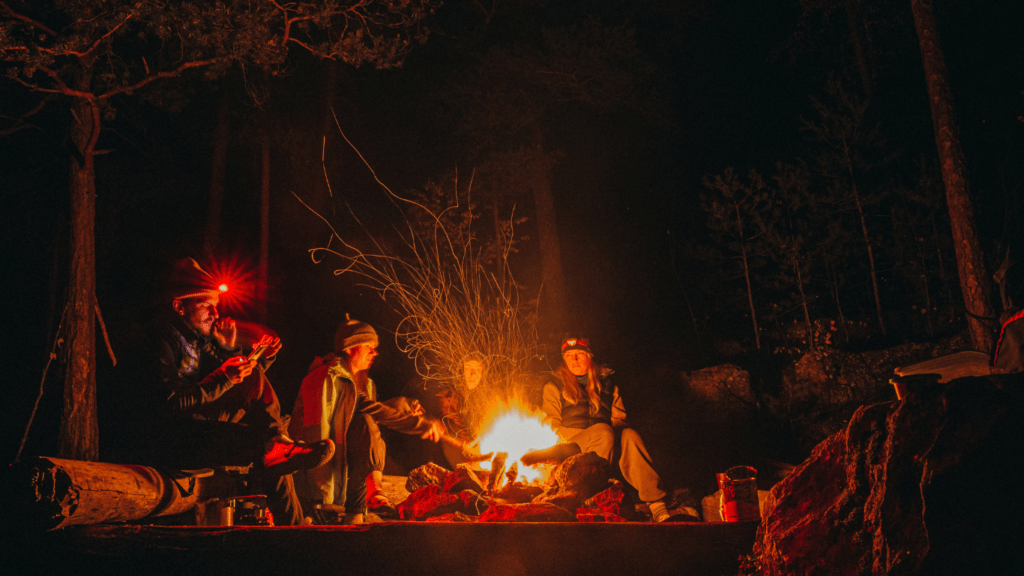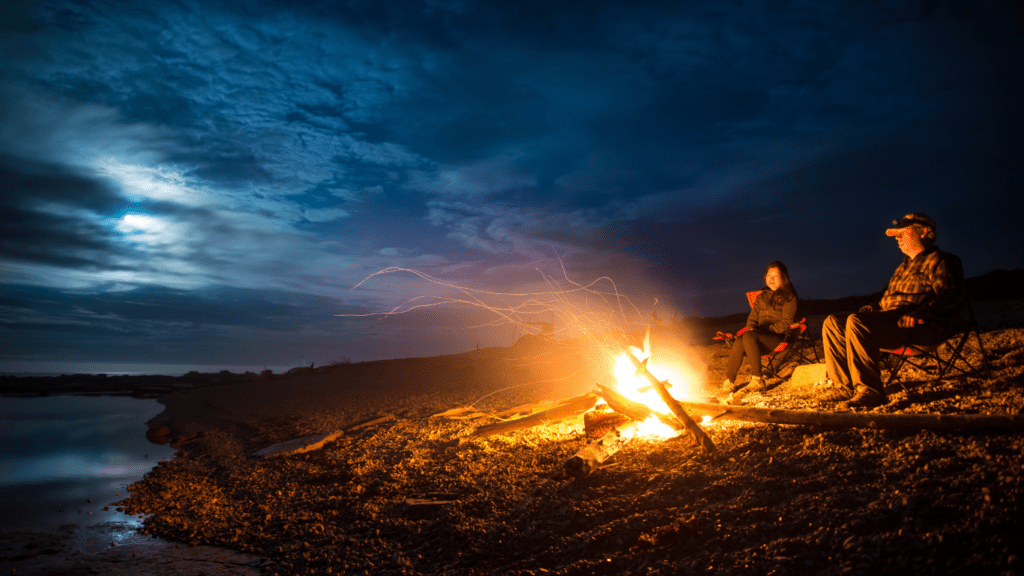Venturing into the great outdoors can be a thrilling experience, but unpredictable weather can quickly turn a camping trip into a soggy affair. As an avid camper, I’ve learned the importance of staying warm and dry in wet or cold conditions to ensure a comfortable and enjoyable outdoor adventure. In this article, I’ll share some valuable tips and tricks to help you stay cozy and dry when the weather takes a turn for the worse during your camping escapades.
From choosing the right gear to setting up camp strategically, there are simple yet effective ways to combat the chill and dampness that often accompany inclement weather. With a few smart strategies up your sleeve, you can be well-prepared to handle whatever Mother Nature throws your way and make the most of your camping experience, no matter the forecast. So, let’s dive into the essential techniques that will keep you warm, dry, and ready for outdoor fun in any weather conditions.
Understanding Wet and Cold Camping Conditions
Importance of Staying Warm and Dry
Staying warm and dry while camping in wet or cold conditions is crucial for my outdoor comfort and safety. Proper insulation and moisture management help prevent hypothermia and other cold-related illnesses, ensuring an enjoyable camping experience.
Risks of Exposure to Wet and Cold
Exposure to wet and cold conditions can lead to serious health risks such as hypothermia, frostbite, and respiratory infections. These conditions can impact my camping trip negatively and even pose life-threatening situations if not addressed promptly.
Preparing Your Gear for the Elements
Choosing the Right Camping Gear
When preparing for camping in wet or cold conditions, selecting the appropriate gear is crucial. It’s essential to prioritize items that provide insulation and protection from moisture. Here are some key gear considerations to ensure you stay warm and dry during your outdoor adventures:
- Sleeping Bag: Opt for a sleeping bag with a lower temperature rating than the expected nighttime temperature to stay warm. Ensure it is water-resistant or bring a waterproof cover to prevent moisture from seeping in.
- Clothing: Dress in layers with moisture-wicking base layers, insulating mid-layers, and waterproof outer layers. Pack extra socks to keep your feet dry and warm throughout the trip.
- Tent: Choose a tent with a waterproof rainfly and ground tarp to shield you from rain and ground moisture. Check for any tears or leaks before heading out to ensure maximum protection.
- Footwear: Invest in waterproof and insulated boots to keep your feet dry and warm. Double-check the condition of your boots to avoid discomfort or frostbite from wet feet.
- Fire Starter: Pack reliable fire-starting tools like waterproof matches or a lighter in a waterproof container. Being able to start a fire quickly is essential for warmth and cooking in damp conditions.
- Cooking Equipment: Opt for a portable stove or cooking system that works well even in windy or wet conditions. Consider bringing extra fuel in case of unexpected weather delays.
By carefully selecting and maintaining your camping gear to withstand wet and cold conditions, you can ensure a comfortable and enjoyable outdoor experience.
Techniques to Stay Warm and Dry
To stay warm and dry in wet or cold camping conditions, it’s essential to employ effective techniques that prioritize insulation and moisture management. Here are some key strategies to help you combat the challenges of unpredictable weather and ensure your comfort and safety outdoors:
- Proper Insulation:
Effective insulation is crucial in keeping your body warm during cold camping nights. Make sure to insulate your tent with a quality sleeping bag, sleeping pad, and insulating layers to trap body heat and shield you from the cold ground. - Moisture Management:
Moisture control is essential to staying dry in wet conditions. Avoid dampness by using moisture-wicking clothing, waterproof outer layers, and waterproof footwear to prevent water from seeping in and chilling your body. - Selecting the Right Gear:
Choosing appropriate gear is key to combating the elements. Opt for a sleeping bag with the right temperature rating, moisture-resistant clothing, a waterproof tent, insulated footwear, quick-drying towels, and fire starters to stay warm, dry, and comfortable throughout your camping trip. - Strategic Camp Setup:
Setting up your campsite strategically can help mitigate the effects of wet or cold weather. Pitch your tent on high ground to avoid flooding, use a ground tarp to prevent moisture from seeping in, and position your tent away from strong winds to reduce heat loss. - Awareness of Risks:
Being aware of the risks associated with exposure to wet and cold weather is crucial. Educate yourself on the symptoms of hypothermia and frostbite, and know how to recognize and address them promptly to stay safe during your outdoor adventures.
By implementing these techniques and being prepared for wet and cold conditions, you can enjoy a comfortable and safe camping experience even in challenging weather scenarios.
Safety Measures in Wet or Cold Camping Conditions
In wet or cold camping conditions, prioritizing safety is crucial to ensure a comfortable and secure outdoor experience. Proper preparation and adherence to safety measures can significantly reduce the risk of weather-related issues. Here are essential safety measures to consider:
- Inspect Your Gear Regularly: Regularly check your camping gear, including tents, sleeping bags, and clothing, for any signs of wear and tear. Replace or repair damaged items to maintain their effectiveness in protecting you from the elements.
- Stay Dry: Keep your clothing, especially your base layer, dry at all times. Moisture-wicking fabric is essential to draw sweat away from your skin and keep you dry. Change into dry clothes if you get wet to prevent heat loss through evaporation.
- Maintain Body Heat: Layer your clothing to trap heat close to your body. Start with a moisture-wicking base layer, add insulating layers like fleece or down jackets, and top it off with a waterproof and windproof outer layer to retain warmth and protect against the elements.
- Monitor Weather Conditions: Stay informed about the weather forecast before and during your camping trip. Be prepared for sudden changes in weather and adjust your plans accordingly. Avoid camping near water bodies during cold weather to reduce exposure to chilling winds.
- Emergency Plan: Have an emergency plan in place in case of severe weather conditions or unexpected emergencies. Share your camping itinerary with a trusted contact and know the location of the nearest shelter or emergency services.
By following these safety measures, campers can enhance their preparedness and minimize risks associated with wet or cold camping conditions. Prioritizing safety ensures a more enjoyable and comfortable outdoor experience while mitigating potential hazards.



 Karencita Oboyler brings her creative flair and deep appreciation for the natural world to her role at Terra Tactician Tactics. With a background in digital marketing and content strategy, Karencita is dedicated to crafting engaging and visually appealing articles that captivate the platform's diverse audience. Her work focuses on highlighting unique outdoor destinations, offering practical travel advice, and showcasing the beauty of nature through stunning photography and storytelling. Karencita's ability to blend creativity with valuable information has helped Terra Tactician Tactics stand out as a dynamic and compelling resource for outdoor enthusiasts.
Beyond her content contributions, Karencita is passionate about building a vibrant community around the platform. She is committed to fostering an inclusive space where everyone, from seasoned adventurers to curious beginners, feels welcomed and inspired to explore the great outdoors. Her innovative ideas and strategic approach to content development have been instrumental in expanding Terra Tactician Tactics' reach and impact. Karencita's enthusiasm for the project is matched only by her love for nature, making her an integral part of the team and its continued success.
Karencita Oboyler brings her creative flair and deep appreciation for the natural world to her role at Terra Tactician Tactics. With a background in digital marketing and content strategy, Karencita is dedicated to crafting engaging and visually appealing articles that captivate the platform's diverse audience. Her work focuses on highlighting unique outdoor destinations, offering practical travel advice, and showcasing the beauty of nature through stunning photography and storytelling. Karencita's ability to blend creativity with valuable information has helped Terra Tactician Tactics stand out as a dynamic and compelling resource for outdoor enthusiasts.
Beyond her content contributions, Karencita is passionate about building a vibrant community around the platform. She is committed to fostering an inclusive space where everyone, from seasoned adventurers to curious beginners, feels welcomed and inspired to explore the great outdoors. Her innovative ideas and strategic approach to content development have been instrumental in expanding Terra Tactician Tactics' reach and impact. Karencita's enthusiasm for the project is matched only by her love for nature, making her an integral part of the team and its continued success.